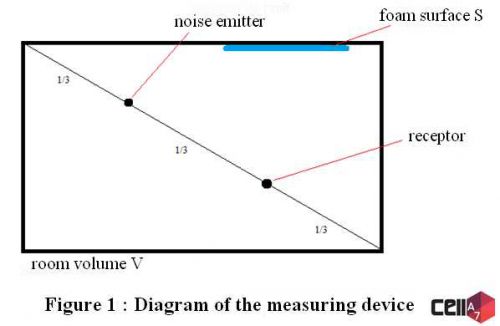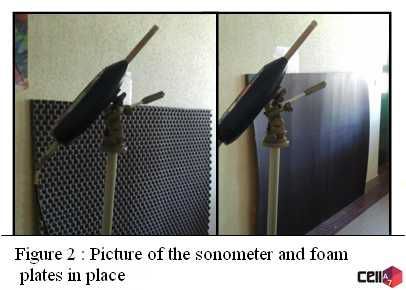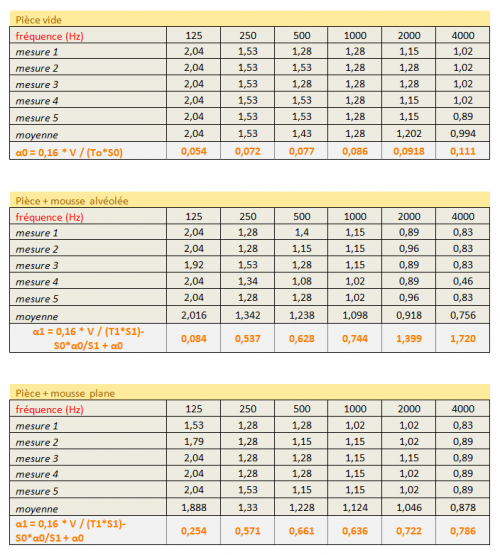Acoustics in building trade
For this experiment, we use a sonometer which record the reverberation time of a sound wave in an empty room with a known volume. The emitter broadcast a specific sound, called "bruit rose" in French, which is used as a known reference. The transmitter and the receiver are set up on the diagonal of the room (one third appart). The foam is placed against one of the walls as shown on the figure below.
It’s important to have an empty room to get the most accurate result as possible. Only one operator stays in the room during the measurment to avoid disturbance.
Three successions of five measurements are made : one for each foam and one another without foam (empty room).
The equivalent absorption area of the room without foam is :
The equivalent absorption area of the room with foam is :
A =  = S0 x α0 + S1(α1- α0) ==> α1 =
= S0 x α0 + S1(α1- α0) ==> α1 = 
So, for a volume of the room V = 80m3, a surface of the room S0= 116m2 and a foam surface S1 = 1.8*1.4 =2.52 m2, we get this results :
Which gives :
The absorption coefficient increases when frequencies increase, and it is more important for the flat foam than for the alveolated surface one, considering low frequency. However, for high frequencies (> 1000Hz), the results are reversed.
This shows that cellular materials have many properties which justify their use in the building trade isolation sector.





